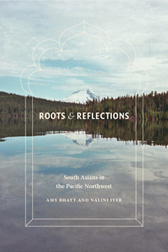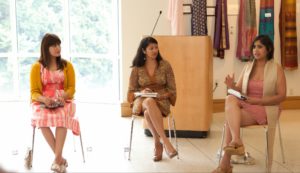I was interviewed for a piece on South Asian philanthropy in the Pacific Northwest for December’s issue of Seattle Magazine. Check it out!
Stutevill, Sarah. “South Asians are Becoming More Visible in the Philanthropic Community.” Seattle Magazine, December 2015, print edition.
From the article:
“There is a propensity for the Indian community to give to orgs that are doing work in India,” says Badshah. The contributions helped establish a culture of global giving at the burgeoning tech giant, and came at a time when the region as a whole was re-envisioning itself as an international economic player. “The economic explosion and upward mobility of the tech sector and of Seattle has been paralleled in certain communities…. South Asians are an example,” says Amy Bhatt, an assistant professor at the University of Maryland, Baltimore County.
Bhatt, who earned her doctorate at the University of Washington, studies South Asian migration trends in the tech industry. “There’s a lot of wealth that has accumulated here.”As a result, that first generation of international tech workers helped incubate a number of nonprofits and foundations. For Srilata Remala’s father, Rao Remala, Microsoft’s first Indian hire, giving back was a way to stay connected to his home country.“He really struggled to get an education,” says Remala of her father, who wrote the original code for Microsoft Windows. “The village that he [grew up] in didn’t have a hospital…. He decided he wanted to give back so that children can have a better chance to succeed, like he did.”
That giving back took the form of a family foundation, now primarily run by Remala, 31, and her sister Srilakshmi Remala Kamdar, 36. Both women donate the family’s charitable funds locally and abroad. The foundation made a recent $500,000 donation to the United Way of King County for youth programming and a $15,000 donation to the Seattle-based Infectious Disease Research Institute to help combat chikungunya—a mosquito-borne disease that has infected members of Remala’s own family back in southern India.

 This year marks the 50th anniversary of the Immigration and Nationality Act of 1965 (also referred to as the Hart-Cellar Act). This landmark legislation was signed by President Lyndon B. Johnson and abolished country based quotas as the basis for immigration. It prioritized instead skills and family reunification, opening the doors to new waves of immigrants from Asia, Africa, and other parts of the world that had been previously restricted. In this guest post, Nalini Iyer and Amy Bhatt, authors of Roots and Reflections: South Asians in the Pacific Northwest reflect on that change and preview some of the celebrations and commemorations that will take place in the coming year.
This year marks the 50th anniversary of the Immigration and Nationality Act of 1965 (also referred to as the Hart-Cellar Act). This landmark legislation was signed by President Lyndon B. Johnson and abolished country based quotas as the basis for immigration. It prioritized instead skills and family reunification, opening the doors to new waves of immigrants from Asia, Africa, and other parts of the world that had been previously restricted. In this guest post, Nalini Iyer and Amy Bhatt, authors of Roots and Reflections: South Asians in the Pacific Northwest reflect on that change and preview some of the celebrations and commemorations that will take place in the coming year.

